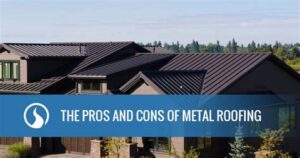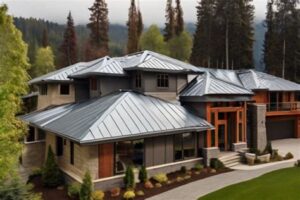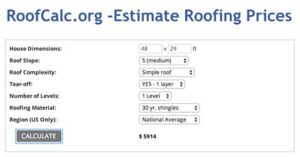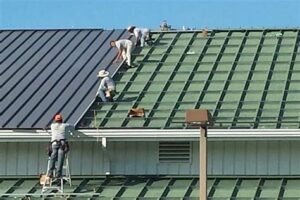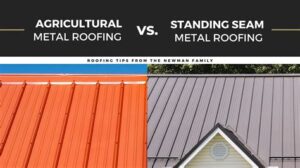Are you considering a new roofing solution for your home? Metal roofing has gained popularity in recent years for its durability and sleek appearance, but is it the right choice for you? In this comprehensive guide, we will explore the pros and cons of metal roofing, providing you with the knowledge you need to make an informed decision. From understanding the advantages that metal roofing offers, such as longevity and energy efficiency, to weighing the potential drawbacks, we will cover all bases. Additionally, we’ll provide a detailed breakdown of costs and discuss the long-term benefits that come with choosing this modern roofing material. Whether you’re building a new home or renovating an existing one, this article will equip you with the essentials to determine if metal roofing aligns with your needs and budget. Let’s dive in!
Understanding The Pros Of Metal Roofing
Metal roofing has gained immense popularity in recent years, and for good reason. Here are some of the key advantages:
- Durability: One of the standout features of metal roofing is its durability. It can withstand harsh weather conditions, including heavy rain, snow, and high winds, making it a reliable choice for various climates.
- Longevity: When properly installed, metal roofs can last 40 to 70 years, which is significantly longer than traditional asphalt shingles. This longevity translates into fewer replacements and repairs over the years.
- Energy Efficiency: Metal roofs reflect solar heat, which can help keep your home cooler in the summer. This characteristic can lead to reduced energy costs by minimizing the need for air conditioning.
- Environmentally Friendly: Many metal roofs are made from recycled materials and are fully recyclable at the end of their life cycle. This aligns with eco-friendly building practices, making it a sustainable option.
- Variety of Styles: Metal roofing comes in various styles, colors, and finishes. This versatility allows homeowners to choose a design that complements their property, enhancing curb appeal.
- Fire Resistance: Metal roofs are non-combustible, which means they provide a higher level of fire resistance than other roofing materials. This feature can be particularly beneficial in areas prone to wildfires.
The combination of durability, longevity, energy efficiency, and aesthetic flexibility makes metal roofing an attractive option for homeowners. When considering the A Complete range of benefits, it is clear why this roofing choice is becoming increasingly popular.
Weighing The Cons Of Metal Roofing
While metal roofing offers numerous advantages, it’s essential to also consider the drawbacks to make a comprehensive decision. Here are some of the key cons associated with metal roofing:
- Higher Initial Costs: One of the significant downsides of metal roofing is the initial investment. Although metal roofs are durable, the upfront costs can be significantly higher compared to traditional roofing materials like asphalt shingles.
- Noise Factor: During rainstorms or hailstorms, metal roofs can be noisier than other roofing options. This noise may be a concern for homeowners who prefer a quieter indoor environment.
- Thermal Expansion: Metal roofs can expand and contract with temperature changes. If not properly installed, this expansion and contraction could lead to loosened fasteners and an increase in maintenance requirements.
- Potential for Denting: While metal roofs are durable, they are not impervious to damage. Hail, falling branches, or other impacts can dent the surface of the roof, which may affect its appearance.
- Limited Color Options: Although many colors are available, some metal roofing materials may have limited color choices compared to other roofing systems, which could impact aesthetic preferences.
- Rust and Corrosion Concerns: Depending on the type of metal, roofs can be susceptible to rust and corrosion, particularly in coastal areas with salt exposure. It’s crucial to choose high-quality materials that provide resistance to these elements.
- Installation Complexity: Metal roofing installation requires specialized knowledge and skills. Improper installation can lead to issues, making it essential to hire experienced professionals who understand metal roofing systems.
In the context of A Complete guide to evaluating the pros and cons, it’s vital to weigh these disadvantages against the benefits to ascertain if metal roofing aligns with your needs and budget.
A Complete Breakdown Of Metal Roofing Costs
When considering metal roofing, it’s crucial to understand the various costs involved in the selection, purchase, and installation process. Here, we provide an in-depth look at what you can expect in terms of expenses, allowing you to make a well-informed decision for your roofing project.
Initial Cost Considerations
The initial cost of metal roofing can vary widely based on several factors such as the type of metal, roofing style, and geographical location. On average, metal roofing can range anywhere from $100 to $900 per square (100 square feet), depending on the materials used. Steel and aluminum are common options, with prices generally on the lower end, while materials like copper and zinc are more expensive.
Material Types and Their Costs
| Material Type | Cost per Square |
|---|---|
| Steel | $100 – $300 |
| Aluminum | $400 – $700 |
| Copper | $800 – $1,500 |
| Zinc | $900 – $1,800 |
Installation Costs
Installation costs can also significantly impact the overall expenses. Professionals typically charge between $1.00 and $5.00 per square foot for installation, depending on the complexity of the job and the specific contractor fees. Skilled installation is essential for the longevity and durability of your metal roof, so it’s worth investing in experienced professionals.
Additional Factors That Influence Costs
- Roof Pitch: Steeper roofs generally cost more to install due to the increased labor and safety measures required.
- Geography: Costs can vary by region due to local labor rates and material availability.
- Roof Size: Larger roofs will naturally incur higher material and labor costs.
- Old Roof Removal: If you need to remove an existing roof, this can add to the overall project cost.
Long-Term Financial Considerations
Although the initial investment in metal roofing might be higher than traditional asphalt shingles, consider the long-term savings that come from increased durability and energy efficiency. Metal roofs typically last 40-70 years, require minimal maintenance, and can reduce energy bills significantly.
While metal roofing may seem costly upfront, the combined factors of longevity, energy savings, and potential insurance discounts make it a wise investment in the long run. When evaluating A Complete picture of your roofing options, understanding these costs is essential in making the best choice for your home.
Evaluating The Long-Term Benefits Of Metal Roofing
When considering residential roofing options, it is essential to look beyond immediate costs and aesthetics to understand the long-term advantages. Metal roofing, in particular, offers numerous benefits that can save homeowners both money and hassle over the years. Here, we evaluate some of these long-term benefits.
Durability: One of the most significant benefits of metal roofing is its exceptional durability. It can withstand extreme weather conditions, including heavy rain, snow, wind, and hail, often enduring for 40-70 years with minimal maintenance required. This longevity translates to fewer replacements and repairs over time, making it a wise investment.
Energy Efficiency: Metal roofs are known for their reflective properties, which help keep homes cooler during hot summers. By reflecting solar radiant heat, metal roofing can reduce cooling costs by up to 25% in some cases. This energy efficiency leads to significant savings on utility bills over the years.
Return on Investment: Many homeowners report a high return on investment when opting for metal roofing, typically recouping 85-95% of their installation costs when selling their homes. This high resale value enhances the financial aspect of choosing metal roofing compared to other materials.
Environmentally Friendly: Metal roofing is often made from recycled materials and can be itself completely recycled at the end of its life. Choosing metal roofing contributes positively to the environment, appealing to eco-conscious homeowners looking for sustainable options.
Additionally, it is resistant to rot, pests, and mildew, ensuring a sound structure and clean living environment over the duration of its use. With these long-term benefits, it becomes clear that metal roofing is not just a trend but a strategic choice that offers lasting value.
Making An Informed Decision On Metal Roofing
When considering metal roofing, it’s essential to weigh the factors that can influence your decision. To make an informed choice, evaluate your specific needs, preferences, and the various attributes of metal roofing. Here are some key aspects to guide you:
| Factor | Considerations |
|---|---|
| Budget | Assess your budget for both upfront costs and long-term savings. Metal roofing may have a higher initial cost but can lead to savings on repairs and energy bills. |
| Climate | Consider the climate in your area. Metal roofs are highly durable and can withstand harsh weather conditions, including heavy rain and high winds. |
| Style Preferences | Metal roofing comes in various colors and styles, allowing you to maintain or enhance your home’s aesthetic appeal. |
| Installation | Evaluate the availability of skilled roofing contractors in your area versed in metal roofing installation, as proper installation is crucial for performance. |
| Resale Value | Consider the impact on your property’s resale value. A Complete assessment of market trends can reveal how metal roofing may enhance property appeal. |
To encapsulate your decision, align your preferences with the pros and cons previously discussed, ensuring that the choice you make reflects both your immediate needs and future considerations. Remember, thorough research and understanding the specifics of metal roofing will empower you to make a complete and informed decision that suits your home and lifestyle.
Frequently Asked Questions
What are the primary advantages of metal roofing?
Metal roofing is known for its durability, longevity, energy efficiency, and minimal maintenance requirements. It can last 50 years or more and is resistant to extreme weather conditions.
What are the common disadvantages of metal roofing?
Common disadvantages include higher initial costs compared to traditional roofing materials, noise during rain or hail, and potential for denting, especially with softer metals.
How does metal roofing compare in terms of costs?
Although metal roofing has a higher upfront cost, it can save you money in the long run due to its longevity, reduced energy costs, and minimal maintenance needs.
Is metal roofing environmentally friendly?
Yes, metal roofing is often made from recycled materials and is fully recyclable at the end of its life. Additionally, it reflects solar heat, which can reduce energy consumption.
What types of metal are commonly used in roofing?
Common materials include aluminum, steel (galvanized or galvalume), copper, and zinc. Each type has its own benefits and is suitable for different climates and applications.
How can I minimize noise from a metal roof?
To minimize noise, soundproofing insulation can be applied under the roofing material, or a solid sheathing can be installed before the metal roof is attached.
What maintenance is required for metal roofing?
Metal roofs require minimal maintenance, primarily needing occasional cleaning to remove debris and inspections to check for rust or loose fasteners.
